The best Сanon 60D lenses for both pros and newbies.
A decent lens is not only a beautiful accessory for your camera but also a practical device that will make the camera perform better. You need to take a serious approach when choosing a lens for different cameras and various purposes. I have compiled the list of the best lenses for Canon 60D so that you can purchase an appropriate model for your needs.
In this article, I have reviewed affordable and reliable Canon 60D lenses. I have considered their main advantages and disadvantages to help you choose a lens appropriate for your needs. You’ll find detailed information about each model that will help you make the right decision.
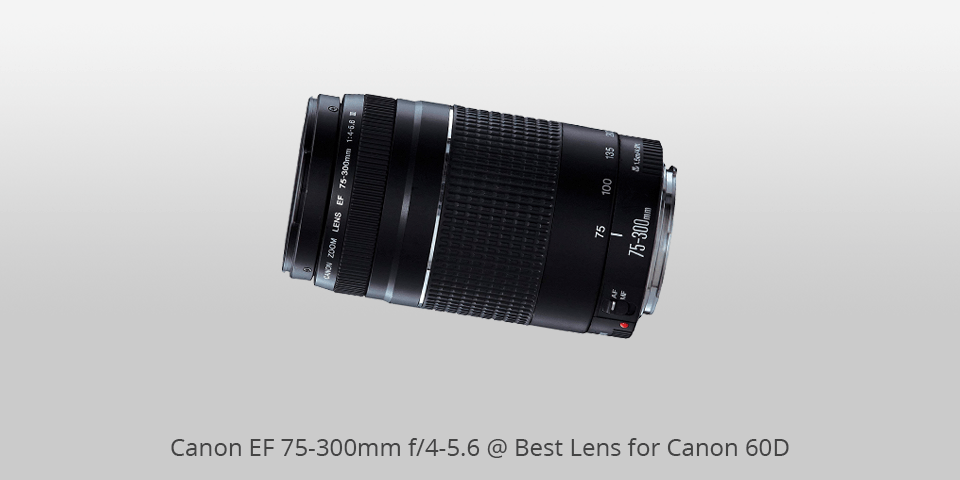
Mount: EF | Diaphragm blades: 7 | Autofocus: yes | Min focus distance: 1.5m | Max magnification: 0,25x | Filter thread: 58mm | Dimensions (WxL): 71 x 122 mm| Weight: 480 g
⊕ Lightweight
⊕ Portable
⊕ Seven-bladed aperture
⊕ Accurate and fast autofocus
⊖ No image stabilization
⊖ Uneven sharpness
⊖ Not weather-resistant
The EF 75-300mm is a Canon 60D telephoto lens that features a lightweight design and compact size. It can be used for a variety of styles such as portrait, sports, wildlife photography, etc.
The EF 75-300mm offers exceptional compatibility and can be used with any Canon full-frame or APS-C DSLR. It will please you with its optical characteristics and a high level of performance. The EF 75-300mm is a great lens that is worth the money and proves that Canon produces -high-quality models.
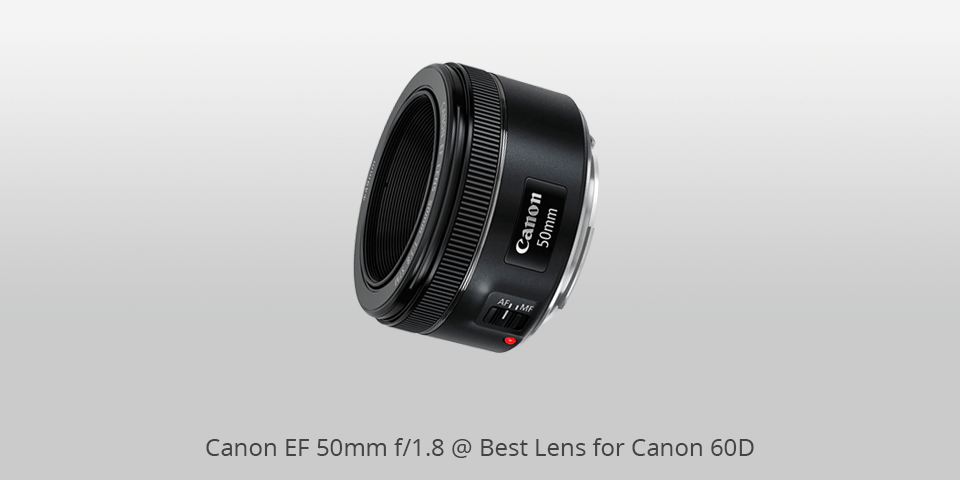
Mount: EF | Diaphragm blades: 9 | Autofocus: yes | Min focus distance: 0.35 m | Max magnification: 0,21x | Filter thread: 49mm | Dimensions (WxL): 69.2 x 39.3mm| Weight: 159g
⊕ An f/1.8 aperture
⊕ Doesn’t weigh much
⊕ Seamless and quiet video focus
⊕ Cheap
⊖ Slight barrel distortion
⊖ Focus is a bit slow
⊖ Occasional flare
⊖ Poor quality at wide aperture
As the lens comes at an affordable price, you can disregard its flaws. The EF 50mm is a camera lens for the Canon 60D that stands out for its good sharpness and price while having a slow AF motor and poor performance at wide apertures. The STM motor is good for video shooting, but since the lens does not offer stabilization, the footage might look jittery. This is especially noticeable when using the lens on APS-C cameras that have Canon’s Live View smooth focusing system.
If Rebel users go for an attractive price and buy a Canon EF 50mm f/1.8, they might be disappointed with the result. This is because the EF 50mm f/1.8 offers inferior performance when you use it with the Rebel as it is a full-frame camera. For Rebel photographers, I recommend looking at the EF-S 24mm f/2.8 STM or EF 40mm f/2.8 STM that has a narrower field of view. Both of them deliver good performance at an affordable price. If you have an expensive full-frame camera, you will benefit from buying the EF 50mm f/1.4 USM or Sigma 50mm f/1.4 DG HSM Art.
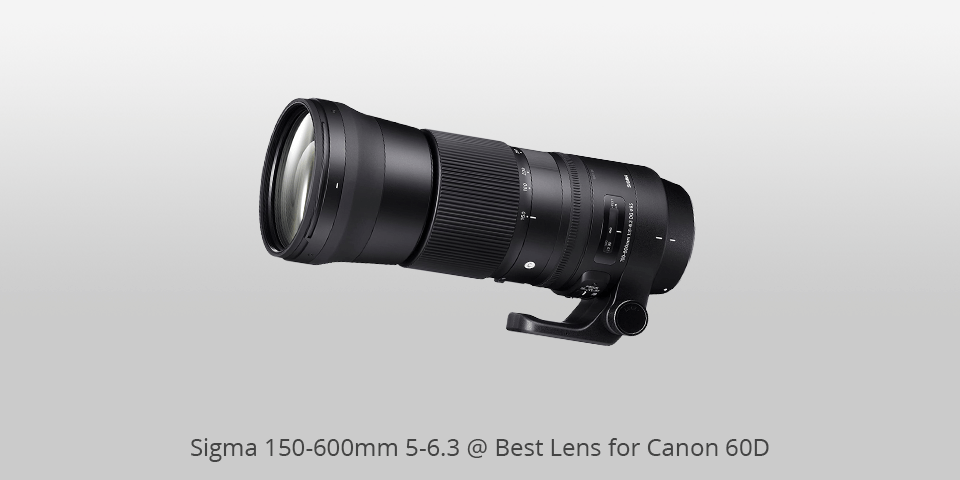
Mount: EF | Diaphragm blades: 9 | Autofocus: yes| Min focus distance: 2.8 m | Max magnification: 0.2x | Filter thread: 95mm | Dimensions (WxL): 10.2 x 4.1 x 4.1 inches| Weight: 4.3 Pounds
⊕ Great telephoto range
⊕ Sharpness
⊕ Comes with a tripod collar and lens hood
⊕ Fast focus
⊖ Causes chromatic aberration
⊖ Slight pincushion distortion
⊖ A narrow aperture
⊖ Heavy
⊖ Not fully dust- and splash-resistant
The Sigma 150-600mm is among the best lenses for Canon 60D. It produces a high-quality image and has great telephoto reach, which proves that its price could be even higher. At the maximum aperture, the lens offers excellent sharpness, which deteriorates slightly at extreme telephoto angles.
When the telephoto is set to its maximum, there is a slight softness around the edges and color fringing along with pincushion distortion throughout the zoom range. However, considering the price and compactness of the lens, these drawbacks can be tolerated. The Sports version of the model is one of the best I have ever tested. Overall, the Sigma 150-600mm is a lens with excellent telephoto reach, quick autofocus and good image stabilization at an affordable cost.
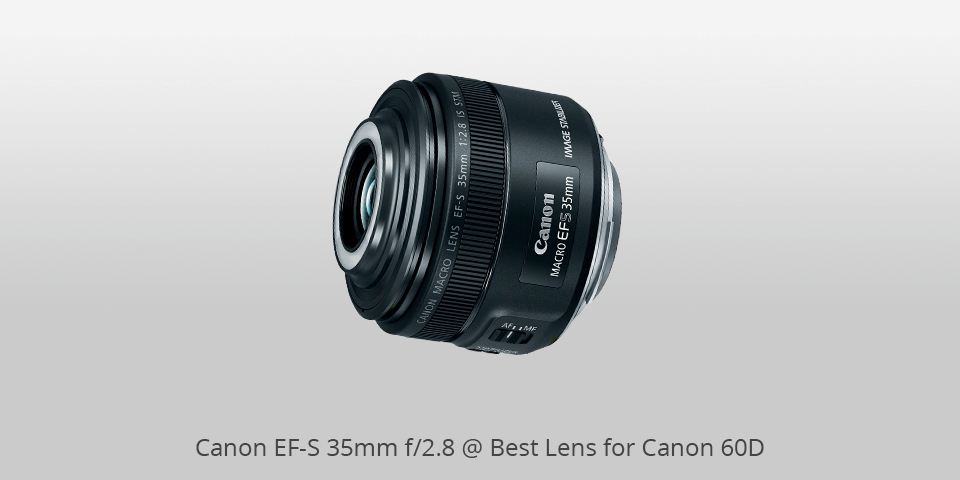
Mount: EF-S | Diaphragm blades: 9 | Autofocus: yes | Min focus distance: 13 cm | Max magnification: 1x | Filter thread: 49mm | Dimensions (WxL): 69.2 x 55.8 mm| Weight: 190 g
⊕ Portable
⊕ 1:1 enlargement
⊕ Well-stabilized image
⊕ Sharp enough
⊖ Occasional distortion
⊖ Dark corners at wide apertures
⊖ Manual focus-by-wire design
The EF-S 35mm Canon 60D macro lens is an affordable model for photographers who shoot with Canon APS-C SLR cameras. It is great for everyday low-light photography due to the standard field of view, wide f/2.8 aperture and well-stabilized picture. Besides, you get better quality photos if you compare them to the ones produced by entry-level zoom lenses. Integrated lights fill in shadows and greatly improve macro focusing capabilities.
The Canon EF-S 35mm f/2.8 Macro IS STM is a convenient and compact model with integrated illumination and good stabilization. Except for minor barrel distortion, the lens offers excellent performance.
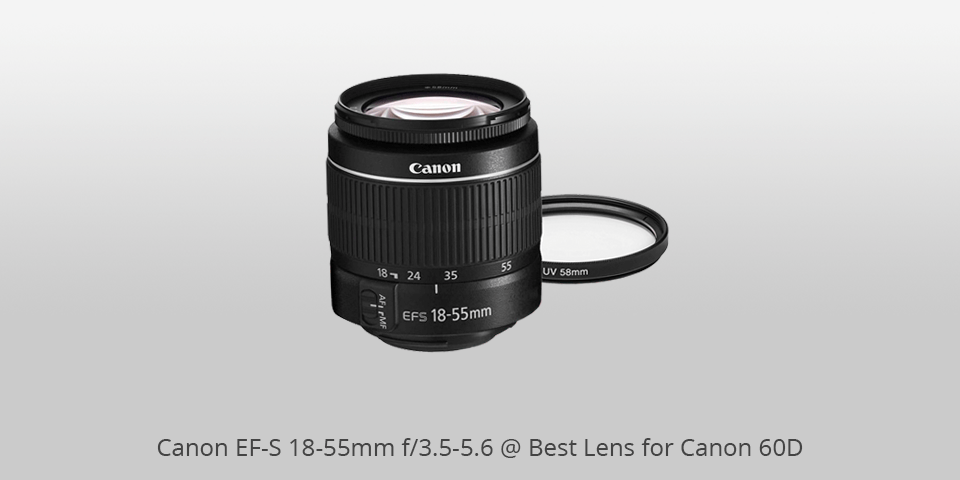
Mount: EF-S | Diaphragm blades: 6 | Autofocus: yes | Min focus distance: 25cm | Max magnification: 0,34x | Filter thread: 58mm | Dimensions (WxL): 68.5 x 70 mm| Weight: 200 g
⊕ High sharpness
⊕ STM focus motor
⊕ Well-stabilized optics
⊖ Plastic mount
⊖ Visible distortion
⊖ Causes color fringing
⊖ Narrow aperture
The EF-S 18-55mm is a Canon 60D zoom lens that is extremely sharp throughout the entire range. Minor distortions, blackouts and color fringing can always be edited with the help of software if they spoil the frame. Due to the STM motor, you get smooth video AF when paired with the EOS T4i, T5i or SL1. Most likely, the next SLR models will have this feature too.
The EF-S 18-135mm f/3.5-5.6 IS STM is considered to be an improved version of the 18-55mm. Many photographers choose it due to its large zoom ratio, good sharpness and smooth focusing. If the EF-S 18-135mm still doesn’t fit your budget, then the EF-S 18-55mm is a great option to choose.
| Image | Name | Features | |
|---|---|---|---|
 |
Canon EF 75-300mm f/4-5.6
Our choice |
CHECK PRICE → | |
 |
Canon EF 50mm f/1.8
Popular |
CHECK PRICE → | |
 |
Sigma 150-600mm 5-6.3
Professional |
CHECK PRICE → |
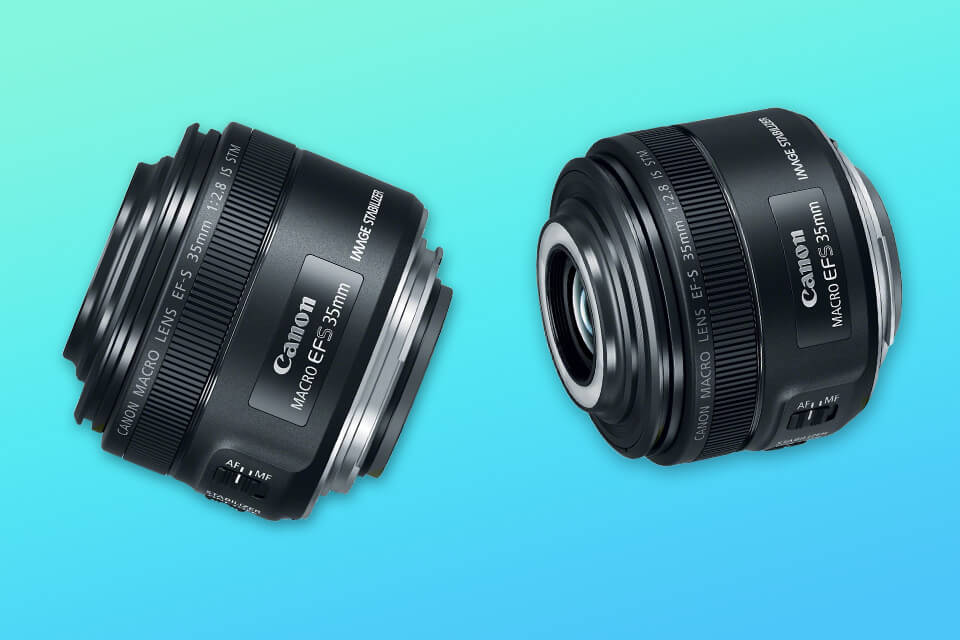
While there are many Canon EOS 60D lenses on the market, not every model will be effective for your purposes. I suggest paying attention to several important features when choosing a lens. You shouldn’t neglect them if you want to obtain a worthy lens that will serve you for years to come.
Build quality plays an essential role in lens performance. Lenses can be too expensive, this is why you should choose a lens made of high-quality materials to buy a reliable model. Well-known brands provide reliable high-quality products.
Ease of use is another important characteristic that affects your shooting experience. When buying a lens, you need to make sure it is easy-to-use and set up. Such models are perfect even for novice photographers.
Nowadays, there are many types of cameras. I recommend buying lenses that are compatible with different camera shapes.
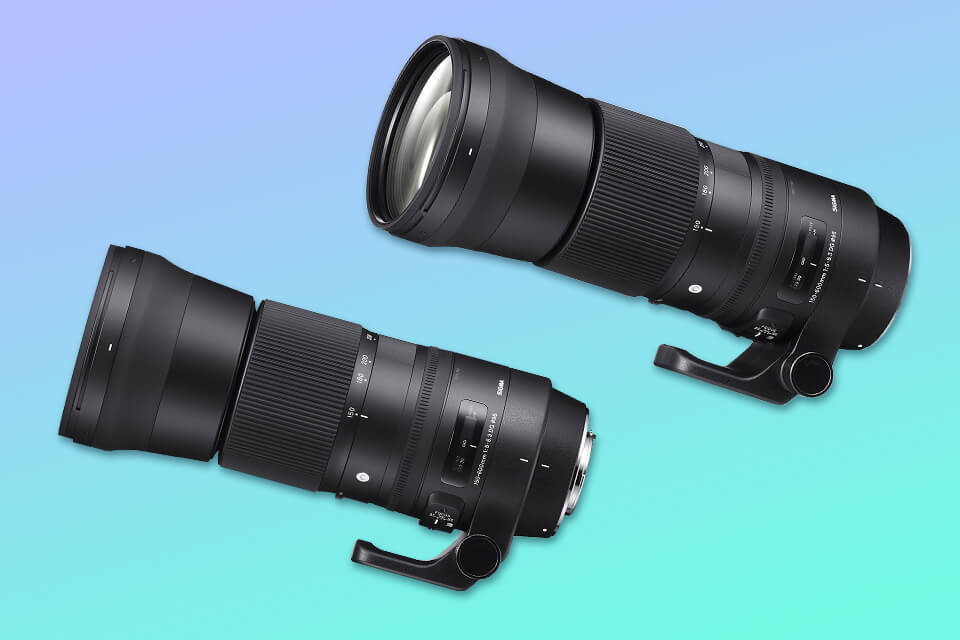
This characteristic might be a pleasant addition to other advantages of a lens. To shoot photos in the most unpredictable conditions, I recommend choosing a waterproof and dust-proof lens that is weather-resistant.
The Canon EOS 60D works well with EF mount lenses. Alternatively, you can use EF-S lenses with it. They have been designed specifically for cameras with APS-C sized sensors. The sub-frame sensor on the Canon 60D indicates that the camera has a smaller angle of view (1/1.6x) compared with a full-frame model.
The 60D is suitable for beginners as the camera has a full auto mode. However, a mid-range Canon camera isn’t the best option for them. Alternatively, I recommend checking out the Canon Rebel. It offers similar features for a smaller price.
When creating native Canon lenses, manufacturers decided to make them interchangeable. If you had a Canon EOS, then any EF lens was compatible with it. It’s still true today, as any EF lens can be mounted on EOS cameras.
The main difference between the two is the focal length, in other words, the distance between the mount flange and sensor. The Canon EF-M has an 18mm flange focal length, compared to 44mm for the EF and EF-S systems.

 Rating
Rating